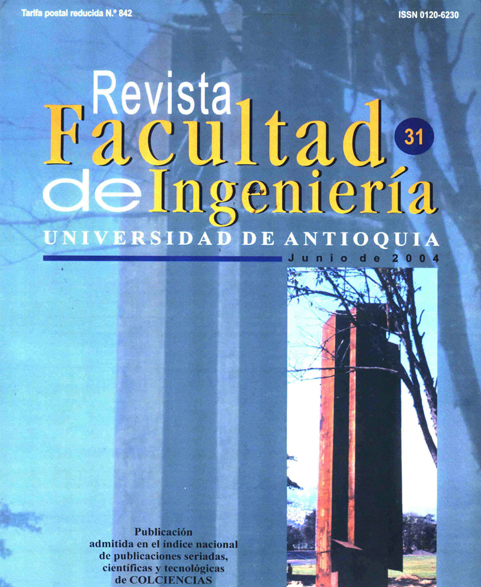Method for diffusible hydrogen analysis in welding materials by gas chromatography
DOI:
https://doi.org/10.17533/udea.redin.344512Keywords:
E-7018 electrodes, welding, diffusible hydrogenAbstract
A new method was developed by gas chromatography for diffusible hydrogen analysis in E-7018 ordinary electrodes, using a packed column and nitrogen as reference and carrier gas. The method includes two thermal treatments to the weld pieces, before and after the welding process.
The quantitative analysis was made using the external standard method. The method is selective, and the linearity is adequate between 0-20 μL of hydrogen, with a dynamic range between 0,69-17,28 μL. The correlation coefficient higher than 0,99 in all cases indicate good correlation. The accuracy has a mean value of 99,46%. The detection and quantification limits have values adequate to our aims. There were found differences between both methods, glycerine and gas chromatography. The developed and proposed method can be used for routine analysis of hydrogen in welding materials using E-7018 electrodes.
Downloads
References
Funderburk, Scott. “Selecting filler metals: low hydrogen”. En: Welding Innovation. Vol. 17, N.° 1. 2000.
American Welding Society. “Standard methods for determination of the Diffusible Hydrogen content of Martesinic, Bainitic and Ferritic Steel Weld Metal produced by arc welding”. 1993. p. 16.
UNE 14-614-83. “Determinación del Hidrógeno en metal aportado procedente de la utilización de electrodos revestidos en la soldadura de aceros suaves y de baja aleación”. En: Instituto Español de Normalización. 1983.
Grob, Robert. Modern Practice of Gas Chromatography. Wiley Interscience. New York. 3th Edition. 1995.
Schmid, María. “Gestión de Calidad III”. En: Noticias Técnicas del Laboratorio. N.° 4. 2001.
Schmid, María. “Gestión de Calidad II”. En: Noticias Técnicas del Laboratorio. N.° 2. 2001.
Downloads
Published
How to Cite
Issue
Section
License
Revista Facultad de Ingeniería, Universidad de Antioquia is licensed under the Creative Commons Attribution BY-NC-SA 4.0 license. https://creativecommons.org/licenses/by-nc-sa/4.0/deed.en
You are free to:
Share — copy and redistribute the material in any medium or format
Adapt — remix, transform, and build upon the material
Under the following terms:
Attribution — You must give appropriate credit, provide a link to the license, and indicate if changes were made. You may do so in any reasonable manner, but not in any way that suggests the licensor endorses you or your use.
NonCommercial — You may not use the material for commercial purposes.
ShareAlike — If you remix, transform, or build upon the material, you must distribute your contributions under the same license as the original.
The material published in the journal can be distributed, copied and exhibited by third parties if the respective credits are given to the journal. No commercial benefit can be obtained and derivative works must be under the same license terms as the original work.










 Twitter
Twitter